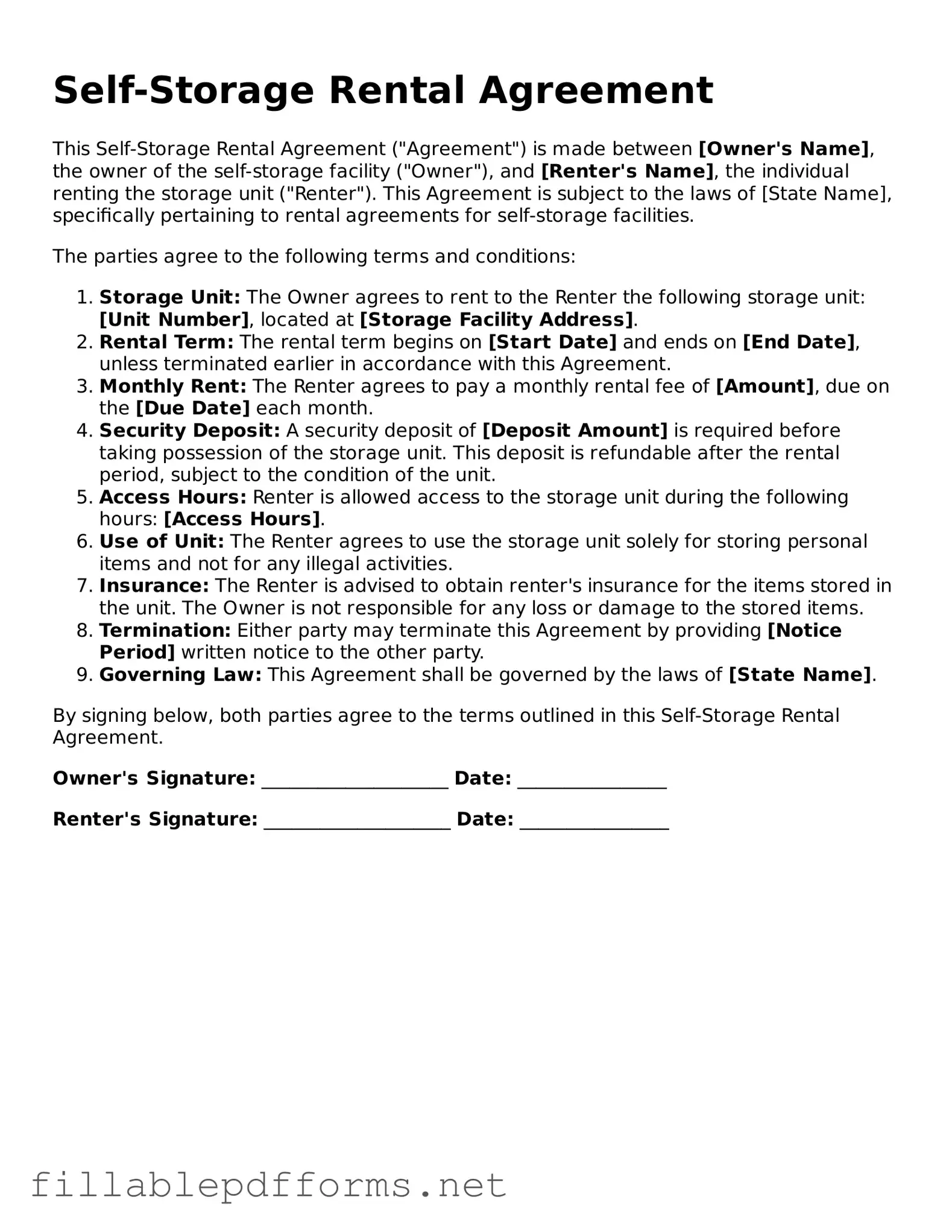Blank Self-Storage Rental Agreement Template
The Self-Storage Rental Agreement form is a legal document that outlines the terms and conditions between a storage facility and a customer renting a storage unit. This agreement serves to protect both parties by clearly defining responsibilities, payment terms, and access rights. Understanding this form is essential for anyone looking to rent a storage space, ensuring a smooth and secure rental experience.
Launch Editor Here
